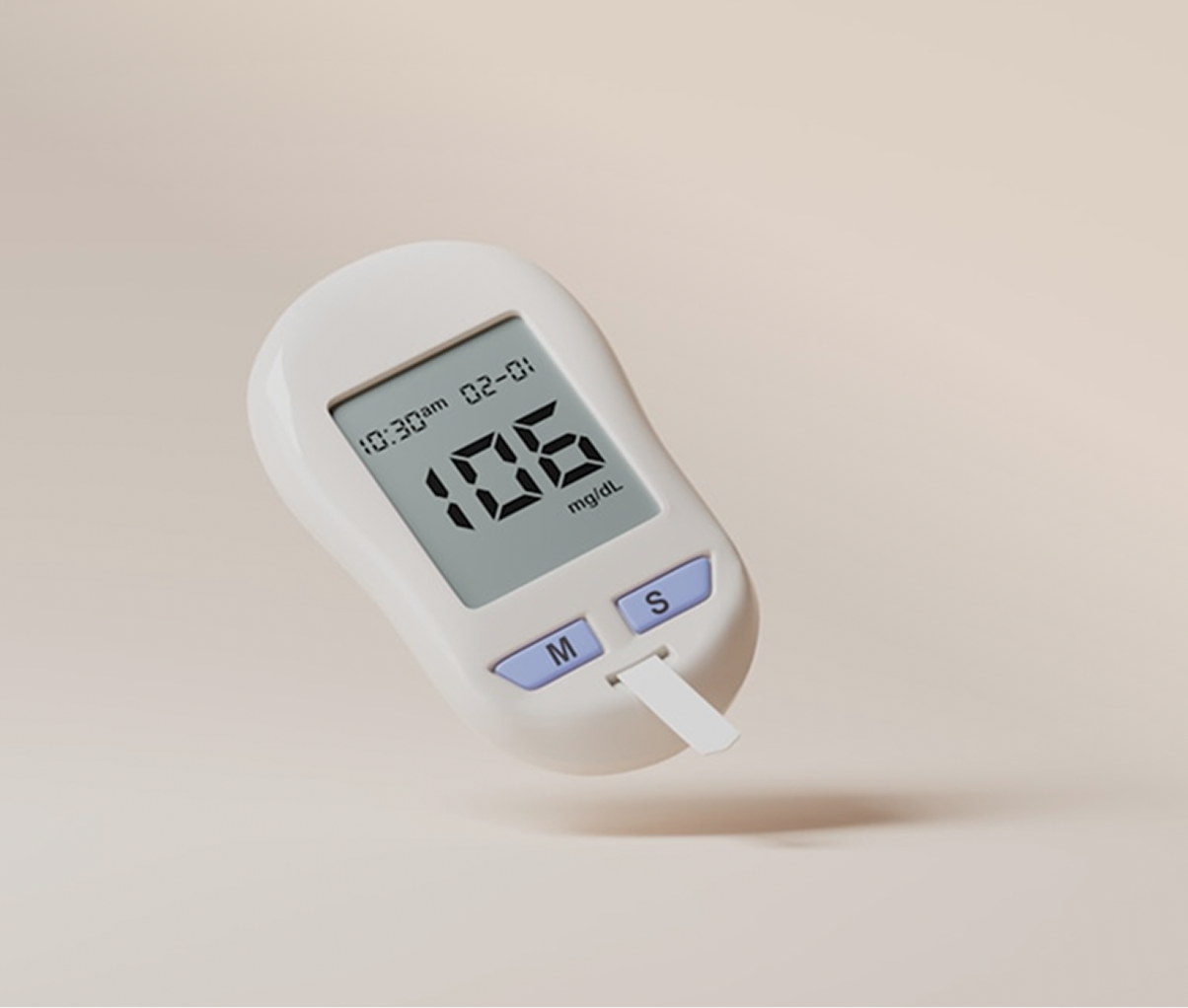
A Complete Guide to Mitochondrial Health
There’s a reason some 70-year-olds can hike mountains while others struggle to climb a flight of stairs.
It’s not just genetics. It’s not just luck. It’s what’s happening inside the microscopic power plants in their cells.
Your mitochondria aren’t just making energy; they’re deciding how well you age. They dictate how quickly you recover from a workout, whether your brain stays sharp in the afternoon, how easily you burn fat, and how fast your body repairs itself after injury or illness.
When they’re strong, you feel it: steady energy from morning to night, clear thinking, a metabolism that works with you instead of against you. When they’re damaged or sluggish, everything gets harder. Focus fades, energy crashes, and your body quietly shifts into survival mode.
But you’re not stuck with the mitochondria you have. You can make more of them. You can make them work better. And you can protect them from the daily stressors that chip away at their performance, whether that’s poor sleep, chronic stress, processed food, or environmental toxins.
In this week’s issue, we’ll pull back the curtain on the tiny engines running your life—and show you how to make them stronger, more efficient, and harder to break. Because if you want a longer healthspan, this is where the work starts.
What Are Mitochondria and How Do They Work?
Mitochondria are your cells’ energy-making machinery. You have between 500 and 2,000 of them in every single cell, with the highest concentrations in your most energy-demanding organs: your heart, brain, muscles, and liver. These microscopic factories take the food you eat and the oxygen you breathe and convert them into ATP—the actual energy currency your body runs on.
Here's where it gets really interesting and what explains why so many people struggle with weight and energy issues that seem to come out of nowhere.
Your mitochondria don't just make energy; they control your entire metabolic system. When they're functioning optimally, they efficiently burn both glucose and fat for fuel, keeping your blood sugar stable and your metabolism humming. But when mitochondrial function declines, several things happen.
Your fat-burning ability shuts down. Damaged mitochondria struggle to utilize fat as fuel, forcing your body to rely primarily on glucose. This leads to increased hunger, cravings, and fat storage, especially around your midsection.
Your blood sugar becomes unstable. Healthy mitochondria help regulate insulin sensitivity. When they're impaired, your cells become resistant to insulin, leading to blood sugar spikes and crashes that leave you exhausted and craving more food.
Your metabolic rate slows. Since mitochondria are responsible for cellular energy production, having fewer or less efficient mitochondria means your overall metabolic rate decreases. You burn fewer calories at rest, making weight loss increasingly difficult.
This explains why some people can eat the same foods and do the same exercises they've always done, yet suddenly find themselves gaining weight and losing energy as they age.
Mitochondrial dysfunction has been linked to a wide spectrum of conditions—from chronic fatigue, migraines, fibromyalgia, and metabolic syndrome to cardiovascular disease, insulin resistance, and Type 2 diabetes. It’s also associated with neurodegenerative disorders like Alzheimer’s and Parkinson’s, certain autoimmune conditions, allergies, asthma, and even increased susceptibility to infections.
Because every cell depends on mitochondrial energy to function, problems here can ripple across multiple systems at once. Emerging research now connects impaired mitochondrial function to liver and heart disease, post-viral syndromes such as ME/CFS and Long COVID, and other complex, chronic conditions once thought to have entirely different origins.
What's Damaging Your Mitochondria?
Understanding what harms these crucial cellular structures is the first step to protecting them. Here are the main culprits.
Chronic Stress
Perhaps the biggest mitochondrial destroyer in modern life. Constant stress hormones create oxidative damage and interfere with mitochondrial repair processes.
Poor Sleep and Disrupted Circadian Rhythms
Mitochondria repair and regenerate during deep sleep phases. Chronic sleep deprivation, irregular sleep schedules, and poor sleep quality prevent this crucial maintenance work. Your circadian clock directly controls mitochondrial function.
Processed Foods and Sugar
These create inflammatory compounds that damage mitochondrial membranes and overwhelm their processing capacity.
Environmental Toxins
Heavy metals, pesticides, and chemicals interfere with mitochondrial enzymes and create oxidative stress.
Endocrine-Disrupting Chemicals (EDCs)
Common chemicals like BPA, phthalates, and PFAS found in plastics, food packaging, and household products directly impair mitochondrial function by disrupting the electron transport chain and increasing oxidative stress.
Sedentary Lifestyle
Your body makes mitochondria based on demand. No physical challenge means fewer, weaker mitochondria.
Gut Microbiome Imbalances
Your gut bacteria directly influence mitochondrial health through the production of short-chain fatty acids and other metabolites. An unhealthy microbiome creates inflammation that damages mitochondria and reduces energy production.
Check out our Q&A with the world’s leading microbiome researcher.
Age-Related Decline
As we age, our mitochondria naturally become less efficient and fewer in number. This process accelerates after age 40, which is why maintaining mitochondrial health becomes increasingly important with each decade.
Chronic Infections
Bacterial, viral, or fungal infections force mitochondria to work overtime fighting pathogens.
Certain Medications
Some pharmaceuticals, particularly statins and certain antibiotics, can interfere with mitochondrial function.
How to Test for Mitochondrial Dysfunction
If you suspect your energy issues stem from mitochondrial problems, testing can provide valuable insights. However, be aware that comprehensive functional medicine testing can be expensive and is generally not covered by insurance.
Work with a qualified physician to determine which tests are most appropriate for you, and to interpret the results—these tests are complex and not intended for self-diagnosis.
Start with the Most Important Tests
- Comprehensive adrenal stress profile ($150–300): Four saliva samples throughout the day to measure cortisol and DHEA patterns
- Organic acids test ($300–400): Urine test that can identify markers of mitochondrial dysfunction and nutrient deficiencies
- Basic comprehensive metabolic panel ($100–200): Including lactate, which may be elevated in mitochondrial disorders
Additional Functional Medicine Tests
- Intracellular micronutrient analysis ($300–500): Measures vitamin, mineral, and amino acid levels inside your cells
- DUTCH hormone test ($400–500): Comprehensive hormone panel measuring cortisol, DHEA, sex hormones and their metabolites
Advanced Mitochondrial-Specific Tests
- MitoSwab test ($400–600): Non-invasive buccal swab measuring mitochondrial enzyme activity with 84% correlation to muscle biopsy results
- Comprehensive metabolic panel with mitochondrial markers ($500–800): Includes energy production markers, nutritional status, and detoxification capabilities
Supporting Tests to Consider
- Food sensitivity panels ($200–400): Can identify inflammatory triggers
- Gut microbiome analysis ($200–500): Since gut health directly impacts mitochondrial function
- Heavy metal and toxin panels ($300–600): To identify environmental factors damaging cellular function
Testing Timeline
Plan to give interventions at least 3–4 months before retesting to see meaningful changes in these markers.
Which Doctor Should You See?
Traditional doctors often don't recognize symptoms of mitochondrial dysfunction or adrenal fatigue, but functional medicine practitioners use specialized testing to evaluate stress response, recommend targeted nutritional supplements, and address root causes rather than just symptoms.
Functional Medicine Doctor
Functional medicine clinicians are specifically trained to consider the totality of a patient's health journey and address root causes of chronic fatigue and energy issues through comprehensive testing and personalized treatment plans.
Integrative Medicine Physician
Integrative medicine physicians blend conventional medical training with evidence-based complementary therapies. They take a whole-person view, considering physical, emotional, and lifestyle factors, and may combine prescription medications with nutrition guidance, herbal medicine, acupuncture, or mind-body practices.
Naturopathic Doctor (ND)
Naturopathic physicians focus on nutrition, lifestyle factors, and addressing underlying metabolic dysfunction that affects mitochondrial health. They often emphasize dietary changes, targeted supplementation, and detoxification strategies to support the body’s natural healing processes.
What to Expect
Functional medicine appointments often cost $200–500+ per visit and may not be covered by insurance. Many practitioners offer package deals for comprehensive programs. While effective, this approach requires both time and financial investment.
Here’s what you can expect:
- Comprehensive health history review (including family history)
- Detailed symptom assessment across multiple body systems
- Advanced functional lab testing beyond standard blood work (expect to invest $500–2,000+ in initial testing)
- Personalized treatment protocols addressing nutrition, supplements, lifestyle, and stress management
- Follow-up testing and appointments every 3–4 months to monitor progress
- Be prepared for a 6–12 month commitment to see significant results
If Functional Medicine Isn't Available
Look for conventional doctors who are “integrative-minded,” endocrinologists for hormone-related issues, and progressive primary care physicians who understand functional testing.
Remember: There are hundreds of potential causes of fatigue, and a full functional medicine evaluation can assess multiple factors and personalize treatment just for your unique situation.
The Mitochondrial Recovery Plan
Your mitochondria are remarkably adaptable. With the right approach, you can repair damaged ones and even create new ones. As with all aspects of health, success comes from a combination of lifestyle, exercise, diet, and targeted supplements.
Working with the right doctor is essential to improve mitochondrial function. They can identify underlying causes, select the most appropriate tests, and tailor your protocol. The strategies below outline the lifestyle foundations that support optimal mitochondrial health.
1. Fuel Your Mitochondria
Eat mitochondrial-supportive foods:
- Fatty fish (salmon, sardines, mackerel) for omega-3s and CoQ10
- Colorful vegetables for antioxidants that protect against oxidative damage
- Grass-fed meat for B vitamins, iron, and CoQ10
- Nuts and seeds for magnesium and healthy fats
- Organ meats for concentrated nutrients (if you can tolerate them)
Consider key supplements:
- Urolithin A (500–1,000mg daily) promotes mitophagy (the removal of damaged mitochondria) and stimulates mitochondrial renewal, improving endurance and cellular efficiency
- CoQ10 (100–200mg daily, ideally ubiquinol form) is essential for mitochondrial energy production
- Magnesium (400–600mg daily, glycinate or malate forms) is required for over 300 enzymatic reactions, including those in ATP synthesis
- B-complex vitamins (high-quality methylated forms) are critical for cellular metabolism and mitochondrial enzyme function
- Alpha-lipoic acid (300–600mg daily) is a potent antioxidant that protects mitochondria and helps regenerate other antioxidants
- PQQ (10–20mg daily) supports mitochondrial biogenesis (the creation of new mitochondria)
2. NAD⁺ Supplementation
Among all the compounds that fuel your mitochondria, NAD⁺ (nicotinamide adenine dinucleotide) deserves special attention. This crucial coenzyme powers over 400 enzymatic reactions, especially in mitochondrial energy production. As NAD⁺ levels decline with age, mitochondrial efficiency suffers, impacting everything from muscle endurance to cognitive sharpness.
Studies demonstrate that NAD⁺ precursor supplementation can enhance muscle function, protect against muscle stem cell loss, and contribute to extended lifespan in animal models. Human clinical trials show increases in mitochondrial number, improved muscle cell differentiation, and even shifts in gut microbiota composition.
Delivery Methods
- Oral supplements (NR/NMN): Nicotinamide riboside (300–1,000mg daily) or nicotinamide mononucleotide (250–500mg daily). More research exists for NR.
- Transdermal patches: Deliver steady NAD+ absorption over 12–14 hours, bypassing digestive breakdown, though direct research on patches is limited
- IV therapy: Provides immediate high-dose delivery but is expensive, requires medical supervision, and may cause dramatic fluctuations
Realistic Expectations
While NAD+ supplementation shows promise for mitochondrial function, most human trials have not yet demonstrated significant improvements in weight loss or insulin sensitivity in healthy overweight individuals. Benefits appear more pronounced in people with existing mitochondrial dysfunction or age-related decline.
Cost Consideration
Quality NAD+ supplements typically cost $40-150+ monthly, patches can be $100-300+ monthly, and IV therapy ranges from $200-500+ per session.
Consult with a healthcare provider before starting any supplement regimen, especially if you have heart conditions, kidney disease, or take medications. Some supplements can interact with blood thinners and other medications.
3. Exercise Effectively
The right kind of exercise is one of the most powerful ways to stimulate mitochondrial growth and efficiency.
- High-Intensity Interval Training (HIIT): Short bursts of intense activity followed by recovery periods signal your body to create more mitochondria.
- Strength training: Builds muscle mass, which houses more mitochondria and increases metabolic rate.
- Zone 2 cardio: Moderate intensity exercise that specifically trains mitochondrial fat-burning capacity. Think brisk walking or easy cycling where you can still hold a conversation.
Start gradually if you're currently dealing with fatigue. Even 10–15 minutes of gentle movement can begin the recovery process. If you experience chest pain, severe shortness of breath, or heart palpitations during exercise, stop immediately and consult a healthcare provider.
4. Optimize Sleep and Circadian Health
This one’s simple. Prioritize sleep quality and quantity.
5. Master Your Stress Response
Here are a few ways to implement stress management:
- Practice daily meditation or deep breathing (even 5–10 minutes helps)
- Spend time in nature regularly
- Engage in activities that bring you joy and connection
- Consider yoga, tai chi, or other mindful movement practices
- Build strong social connections and support systems
6. Support Your Gut–Mitochondria Connection
Nourish your microbiome.
Check out our guide on the gut microbiome.
7. Strategic Fasting
Intermittent fasting and time-restricted eating can powerfully support mitochondrial health by:
- Triggering cellular clean-up processes (autophagy)
- Improving insulin sensitivity
- Stimulating mitochondrial biogenesis
- Reducing inflammatory markers
Start with a 12-hour overnight fast (like 7:00 p.m.–7:00 a.m.) and gradually extend if it feels good.
If you have diabetes, eating disorders, or are pregnant or breastfeeding, consult your healthcare provider before trying any fasting protocols.
8. Hot and Cold Therapy
Cold exposure (cold showers, ice baths) and heat therapy (saunas, hot baths) both stimulate mitochondrial adaptation and improve cellular resilience.
Check out our heat and cold exposure guide.
People with heart conditions, uncontrolled high blood pressure, or pregnancy should avoid extreme temperature therapies.
9. Minimize Toxin Exposure
Reduce your toxin load by:
- Choosing organic foods when possible, especially for the “Dirty Dozen” produce list
- Using natural cleaning products and personal care items
- Filtering your water (consider a whole-house or at least drinking water filter)
- Avoiding unnecessary medications when possible
- Supporting your body's detoxification with foods like broccoli sprouts, cilantro, and green tea
- Ensuring proper ventilation in your home and avoiding synthetic fragrances
10. Red Light Therapy
Also called photobiomodulation or low-level laser therapy, red light therapy supports mitochondrial health by directly influencing one of the key enzymes in the electron transport chain.
Specific wavelengths of red and near-infrared light (typically 660–850 nm) are absorbed by cytochrome c oxidase (Complex IV), a copper- and heme-containing enzyme inside mitochondria. This interaction improves the enzyme’s ability to transfer electrons and pump protons, leading to more efficient ATP production — the energy currency of your cells.
Key mitochondrial benefits include:
- More energy output: cellular ATP levels can increase significantly, giving cells more fuel for repair, growth, and daily function
- Better electron transport: improves efficiency in the mitochondrial respiratory chain, reducing energy waste
- Mitochondrial biogenesis: stimulates the creation of new mitochondria by activating PGC-1α, a master regulator of mitochondrial growth
- Lower oxidative stress: triggers a mild stress response that upregulates antioxidant defenses and reduces harmful free radicals over time
Improved mitochondrial function can translate into faster muscle recovery, reduced inflammation, enhanced wound healing, healthier skin, and potentially better cognitive performance. It may also help counteract some aspects of age-related mitochondrial decline.
While research is promising, dosing matters. Too much light can reduce benefits. Response varies depending on tissue type, depth of penetration, and baseline mitochondrial health.
What to Expect: Your Recovery Timeline
Mitochondrial recovery doesn't happen overnight, and progress varies significantly between individuals. Many people start noticing improvements within 2–8 weeks of implementing these strategies, but some may need 3–6 months or longer to see significant changes.
Here is a general timeline:
- Weeks 1–2: Better sleep quality, slightly more stable energy levels
- Weeks 3–6: Improved mental clarity, reduced afternoon crashes, better stress tolerance
- Weeks 7–12: Enhanced exercise performance, more consistent energy throughout the day
- Months 3–6: Significant improvements in overall energy, metabolic health, and vitality
An Important Reality Check
Not everyone will see dramatic improvements. Some people have underlying genetic conditions, chronic infections, or other health issues that require additional medical intervention.
If you don't see any improvement after 2–3 months of consistent effort, work with a functional medicine practitioner to dig deeper.
Remember, this is a lifestyle approach, not a quick fix. The goal is to create sustainable habits that support your cellular health for life.
When to Seek Immediate Medical Attention
If you experience severe fatigue accompanied by chest pain, shortness of breath, heart palpitations, sudden weight loss, severe digestive issues, or neurological symptoms, consult a healthcare provider immediately. These could indicate serious underlying conditions.
The Bigger Picture
The most surprising thing about mitochondrial health is how often it hides in plain sight. Chronic fatigue, stubborn weight gain, brain fog, hormonal swings, poor recovery . . . these get treated as separate problems. But zoom out and you see the same thread running through them: an energy system that is underperforming at the cellular level.
This is why functional medicine doctors put so much emphasis here. They are trained to look for patterns, to connect symptoms that seem unrelated, and to dig until they find the root cause. More often than you might expect, that root is mitochondrial dysfunction.
Address it and you won’t just fix your energy levels. You’ll give your brain, heart, muscles, hormones, and immune system the fuel they need to work the way in which they were designed. And because mitochondria respond to changes in diet, movement, stress, sleep, and targeted supplementation, this is a root cause you can actually do something about. In many cases you can see measurable progress in months rather than years.
If you have been chasing solutions without lasting results, it might be time to shift the focus. Instead of treating each symptom in isolation, look deeper into the systems that power everything else.
When you restore energy production at the cellular level, every other intervention you try—such as nutrition, movement, sleep, and stress management—works better. Over time, that shift can be the difference between simply managing your health and truly transforming it.
Disclaimer: This newsletter is provided for educational and informational purposes only and does not constitute providing medical advice or professional services. The information provided should not be used for diagnosing or treating a health problem or disease, and those seeking personal medical advice should consult with a licensed physician.

December 8, 2025

December 5, 2025

November 21, 2025

November 14, 2025

November 14, 2025

November 7, 2025

October 31, 2025

October 24, 2025

October 17, 2025



















































